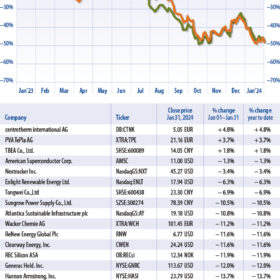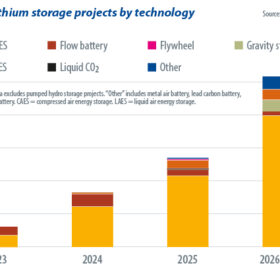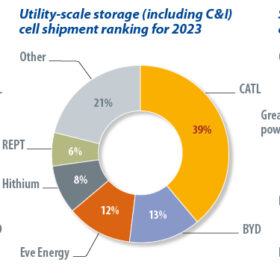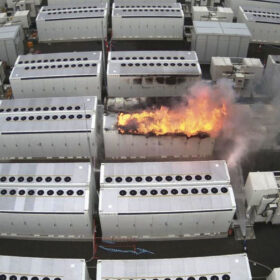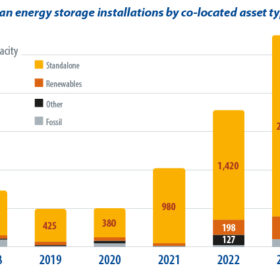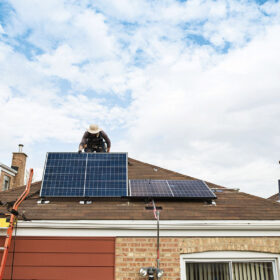Stored potential
As renewables push further into the world’s energy mix, the importance of energy storage to the energy transition becomes ever more apparent. Even the most innovative PV technology has little hope of powering the world 24/7 without a battery to help smooth the peaks and troughs of supply and demand. This March 2024 edition […]
PV profits drying up
The Invesco Solar exchange-traded fund (ETF) under-performed the S&P 500 and Dow Jones Industrial Average (DJIA) stock indexes in January 2024. Jesse Pichel, a managing director at Roth Capital Partners, attributes this to logistics and apparent cashflow problems for some solar companies.
Can anything topple lithium-ion?
The need for long-duration energy storage in a net-zero world is undeniable but with conventional battery prices tumbling, can anything dislodge the mainstream grip of lithium ion? S&P Global’s Susan Taylor provides an update on non-lithium storage technologies.
What’s in store for storage?
InfoLink’s global lithium ion battery supply chain database indicates that the energy storage market experienced a severe surplus and a growing price war in 2023. Despite these forces, market momentum is supporting relatively rapid expansion.
FAT for fitness
Large-scale, stationary battery energy storage systems (BESS’) have rapidly become crucial components of modern power grids. With the increasing adoption of BESS’, however, the risk of battery fires has increased, as Jeff Zwijack, of Clean Energy Associates (CEA), reports.
China owns the battery market
What happened in solar is also happening in energy storage. Sam Adham and Aaron Wade, from business intelligence provider CRU, report on the trend of Chinese companies successfully commodifying lithium ferro-phosphate (LFP) batteries, which are the predominant type used in energy storage systems.
Hybrid projects are driving grid-scale solar
With the worsening climate crisis, it’s easy to lose sight of the progress made over the past decade. Solar growth is eye-watering. Even in Northern Europe, peak solar generation turns early afternoon prices negative with increasing regularity as solar generation exceeds demand. On distribution grids, PV installations are causing congestion on networks designed to meet peak demand. Jon Ferris, from European energy transition practice LCP Delta, examines the co-location of storage as a strategy to keep solar installations growing.
What’s next for battery materials?
Little more than a year ago, the rising cost of raw materials threatened the future of mass-market electric vehicle (EV) adoption, writes Max Reid, principal analyst at Wood Mackenzie. EV and battery producers couldn’t swallow the cost increases because of the industry’s razor thin or negative margins. Higher prices for consumers would crush hopes of reaching ambitious EV adoption targets set by the European Union – let alone global net zero ambition.
Hanging in the balance
Battery storage revenues in Britain are well below historic highs but an appetite for storage capacity remains. Electricity system-operator modernization, increased competition, and new opportunities could all shape the future of British battery energy storage systems (BESS’).
Californian batteries prove solar’s NEM-esis
The transition to California’s new net metering, ‘NEM 3.0,’ regime was justified, in part, as a way to support residential energy storage installations but the state policy has pushed rooftop solar off a cliff.

